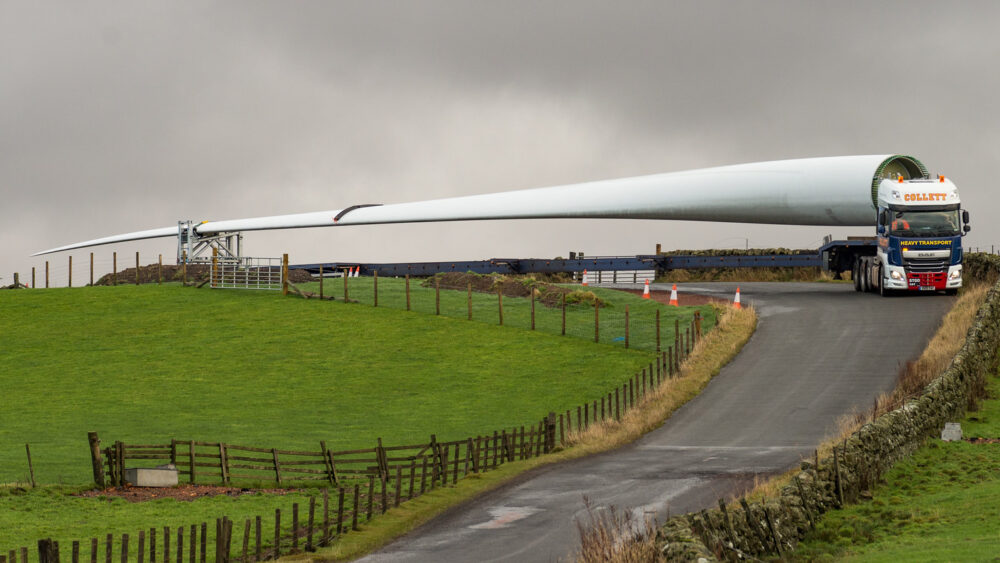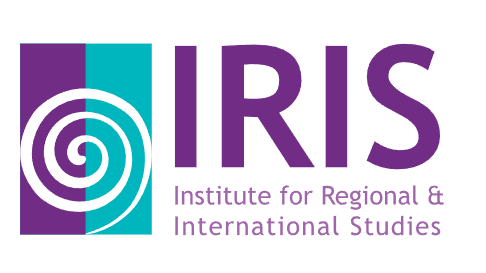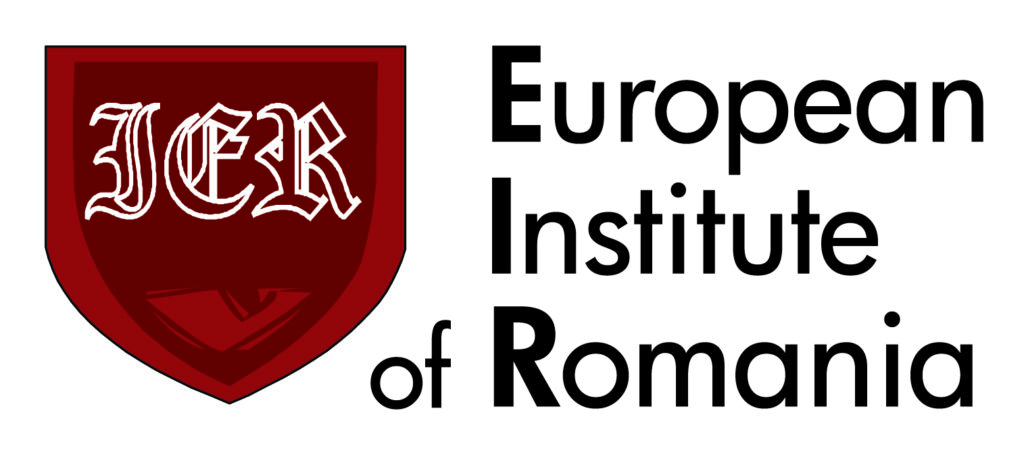Key points:
– The decarbonization of the global economy would be achieved through low and zero emission energy technologies. Countries compete to ensure that this process is based as much as possible on the technologies they themselves export.
– The political and market paradigm of a possible future global economy based on green technologies will be structurally different from that which underpins today’s fossil fuel-based economic system. The transition to renewable energies will not, however, eliminate phenomena fundamental to the current system such as mining or the need to secure global raw material supply chains and the network of complexities which they entail.
– Technological rivalry in the area of renewable energy sources is another layer of geopolitical competition that may decisively influence the shape of the future balance of power and global division of labor. States promote their interests with a variety of tools, including through the conscious construction of their own narratives or the instrumentalization of international institutions.
The place of green energy in the foreign policy instruments: an outline
The currently implemented “green” energy transition is characterized by structurally analogous parameters to those that accompanied the previous great civilizational processes of energy source substitution. For centuries, energy technologies have invariably determined the axis of economic development and international competitiveness. Constant access to a reliable energy source, its efficiency and effective distribution have become guarantors of civilization progress and flywheels of entire economies. States which achieved the best resultant of advancement in these three areas were able to attaint technological and qualitative superiority, and thus conduct external expansion faster, cheaper and on a larger scale than the states which they conquered, which often relied on less optimal energy sources of earlier generations.
This phenomenon characterized the colonial era, from the times of the great geographical discoveries to the imperial conquests by European monarchies of territories in Asia, Africa, and America, all rendered possible by the improvement of sailing propulsion. The advent of the age of coal and the invention of the steam engine made the industrial revolution of the 19th century possible, thus laying the foundations for the era of oil and gas drives and energy mixes, which in turn made possible the unprecedented economic progress of the 20th century, notably in Western countries. At times this phenomenon also influenced the course of armed conflicts. This was the case, for example, with Churchill’s decision, taken on the eve of World War I, to adapt British warships to run on Persian oil instead of Welsh coal. His decision was organizationally and geopolitically risky, but it allowed the British Royal Navy to gain an unquestionable advantage over the then German Kriegsmarine.[1]
Rivalry for primacy in green technologies: a new, additional layer of geopolitical competition
The currently advancing “green” energy transition is no exception to the rule outlined above. The continued availability of renewable energy sources (RES), its increasing efficiency and increasingly effective distribution will no less define the states’ sovereignty than energy transitions of past centuries. At the same time, this transition – like any that preceded it – is proceeding within a certain individual economic and social context. For example, today’s concerns with regard to the transition to green sources of energy raises (e.g. about the higher cost of energy or the risk of energy impoverishment) are different from those that accompanied previous energy transitions (e.g. the risks arising from reliance on fossil fuels imported from far abroad). Moreover, apart from the structural convergences accompanying the green transition as a historical process, it is also characterized by elements immanent to it. This is clearly visible in the context of technological and logistical challenges faced by the vision of a decarbonized future based on renewable energy sources (e.g. energy storage or long-distance transmission of electricity).
As with previous energy transitions, the one witnessed today is accompanied by a competition for primacy in its direction and control. The shape and nature of this competition, however, differs from that which has underpinned the efforts of the states to control and access fossil fuels. Oil, gas, and coal are geographically limited resources on lands over which a state’s sovereignty means ownership of the deposits located underneath. In the case of energy based on, ubiquitous renewable sources, the situation is – quite paradoxically – complicated by the greater number of variables that constitute a state’s control over strategic energy flows.
So far, the enforcement of geopolitical agency in the case of fossil fuels has been based on (i) maximizing one’s own production potential, to the extent that the geology of the state made this possible, (ii) foreign interventions in order to mark control – either direct or indirect – over the state where the desired resources are located (e.g. both U.S. invasions of Iraq), (iii) securing the unencumbered flow of the global supply chains of such resources (e.g. NATO’s anti-piracy operation Ocean Shield), as well as (iv) purchasing fuels on global markets, the availability of which depends on the current economic and political situation, including particular relations between the importing and exporting countries (e.g. Russia’s gas wars with Ukraine).
In the case of renewable energy, geopolitical agency of the state is realized via a different set of components. In the ultimate decarbonized world, which might see the day in the second half of the 21st century, where energy is to be produced and consumed mostly locally or regionally, the network of global fossil fuel chain connections would be replaced by a distributed energy system made up of independent generators, energy storage facilities and long-distance electricity transmission networks. The economic and political paradigm that has enabled the West’s rapid economic growth based on fossil fuels is ultimately to be replaced by a new one in which meeting energy needs will not require importing energy from abroad, at least not in quantities that result in the dependence of the energy-importing country on the energy-exporting country. An efficient, dense, international electricity transmission network would then act as today’s pipelines, distributing energy based on the laws of supply and demand through a digitalized and interconnected market system. In Europe, the foundations for such a future are being laid by the EU’s developing internal electricity market, including through the expansion of interconnection and generation capacity, and the so-called TEN-E strategy, which aims to interconnect the energy infrastructure of EU member states, implement smart grids, establish electricity highways and a cross-border carbon dioxide network.
Such a scenario corresponds with a possible future paradigm that, in the form so approximated above, may characterize a future decarbonized world economy. This paradigm differs from both the one underlying the global economic and political system based on fossil fuels and the one that will evolve in the transitional process leading to decarbonization. It is worth to point out in this context that while decarbonization is today a nominal goal of all major economies, whether – or to what extent – it will in fact be achieved, and how, remains impossible to determine with certainty. A number of risk factors contribute to the fact that international climate policy actions and national efforts to move away from fossil fuels, regardless of their increasing level of ambition, remain largely non-parametric. Among the most significant of these factors are:
– The risk that the state of progress of the decarbonization process varies from country to country or region to region. This risk will grow, inter alia, if developed countries do not provide sufficient financing to secure the green transition in the developing countries of the Global South, whose energy demand will grow rapidly in the coming decades;
– The risk of not making the technological breakthroughs necessary for RES to become widespread in a way that ensures energy security. Regardless of current and future risks associated with anthropogenic climate change, ensuring energy security, i.e. meeting the economy’s demand for fuel and energy, will invariably remain a higher priority than efforts to reduce greenhouse gas emissions. Decarbonization on a global scale will be possible with the realization of energy demand primarily from RES, but for the latter to occur, numerous breakthroughs still need to be made, especially in the areas of the already mentioned electricity storage, optimization of its sourcing and transmission;
– Risks associated with securing the supply chains of critical minerals, especially the so-called rare earths, which are necessary to produce powerful magnets needed in green technologies. A rare earth magnet with the same power as a ferrite magnet is a hundred times smaller, having allowed miniaturization of telephone and digital communication tools, among others, and is much stronger: a magnet made of elements such as samarium is 7 times, and if mad of neodymium, then 10 times stronger than a standard ferrite magnet.[2] As recently as the late 1990s, Japan, the U.S. and Europe served 90 percent of the magnet market, while China now controls two-thirds of global production.[3] Moreover, China’s policies allowed it to reach a monopoly not only in rare earth mining, but also in their processing, for which it now has a market share of 90 percent globally.[4] Western companies, especially French, de facto ceded the refining segment to the Chinese in the 1990s, all the while becoming their largest customers.[5] As a result, China seized not one but two stages of the production chain, which seems to indicate Beijing’s desire to master the integrated rare earth industry from the beginning to the end of the value chain.[6] Volumetrically, there are dozens of elements involved, their total resources remain relatively small: world production of rare earths equals 0.01 percent of steel production.[7] It is also a market prone to particular fluctuations. After rare earth exports from China to Japan were halted following a diplomatic incident between the two nations[8], the price of terbium, for example, rose tenfold and that of dysprosium as much as 100fold, both to around $3000 per kilogram[9]. The ultimate impact of China’s colossal role in rare earths will be determined by the shape of the energy transition in China itself. Even taking into account China’s growing consumption of fossil fuels – which is necessary to meet the country’s growing demand for energy also outside the context of today’s post-pandemic crisis ravaging energy markets – China’s unprecedented scale of investments in RES[10], which are constantly increasing[11], suggests that Beijing is maintaining its very ambitious “green” ambitions.
– Separate, but showing structural similarities to the above is a set of risks concerning critical mineral raw materials occurring more frequently than rare earths, but needed in larger volumes such as lithium, cobalt, copper, tin, nickel, and many others. The direct geopolitical dependencies resulting from the reliance of fossil fuel importing countries on fossil fuel exporting countries will not disappear but will be replaced by new ones of an indirect nature. This state of affairs will increase the probability of renewing the neo-colonial structure of international relations between, on the one hand, the countries of the Global North and China and, on the other hand, the countries of the Global South, where the vast majority of many rare and non-random raw materials are concentrated. A separate piece will be devoted to this issue in the ClimeNous series.
These and many other risks will shape the decarbonization race – the race to shape the future global economy and the place of countries in the new global division of labor. The drive to decarbonize the global economy will widen the gap in economic dependency between countries with a high supply of low-carbon technologies and countries that are technologically impoverished. In this context, it should be noted that the decarbonization model being pursued by governments negotiating under the COP format is not just about green energy transition. It sets the direction of market behavior, which is to reward low- and zero-emission solutions. This means, on the one hand, that emission-based solutions in the energy sector will not be excluded, but their price will take into account the cost of greenhouse gas emissions they emit, e.g. through the carbon tax. On the other hand, this “green” market and institutional orientation will determine the fundamental directions of capital allocation. Both effects will fuel a kind of political-market dichotomy in the transition period of the green transformation, which for instance is discernable in three interrelated phenomena taking place today: Russia’s gas policy towards Europe, the German decision to abandon nuclear energy, and the discussion about the shape and place of hydrogen in the EU’s energy transformation.
Green transition: yes, but using the technologies which a given government can offer
While the ongoing global energy price crisis seems likely to undermine the place of natural gas as a transformative fuel in the decarbonization process, the conviction that this is the role it will play in the coming decades remains essentially unshaken. As a cleaner fuel than oil and coal, natural gas holds the key to the door of the energy transition towards decarbonization, especially in economies where the energy mix is (like Poland on coal) or until recently was (like Germany on nuclear) predominantly or to significant extent based on a single energy source. In the case of Poland, the longstanding efforts to diversify the sources and increase the gas transmission capacity serve both to increase the dependence on supplies from Russia and to increase the share of gas in the national energy mix at the expense of coal.
In Germany, the need to increase the share of gas in the national energy mix has become the inevitable consequence of the political decision to abandon nuclear power and to close numerous fully operational nuclear power plants, which used to satisfy nearly 1/3 of Germany’s energy needs.[12] This decision is the quintessence of the dichotomy between climate policy priorities and overarching geopolitical goals: from the point of view of national, European and global efforts to reduce anthropogenic greenhouse gas emissions, Berlin’s decision to abandon nuclear power is almost unambiguously identified as a mistake[13], while from the perspective of German industry, the country’s decided, expansive orientation towards renewable energy, especially wind power, is set to turn Germany into a pioneer and export potentate of green technologies. Germany is today the largest exporter of industrial goods in the field of environmental and climate protection after China.[14] Berlin’s clear institutional focus on renewable energy sources and diplomatic efforts at the EU level to exclude nuclear technology from the so-called EU taxonomy (i.e. the EU’s classification system for environmentally sustainable economic activity, which is being developed to guide investments) are expected to make German industry the leader of the rapidly growing market for carbon-free energy. At the same time, meeting the resulting increased demand for gas in the interim period requires Germany to secure a steady supply from abroad. The completion of the Nord Stream 2 project indicates, to the discontent of U.S. LNG exporters[15], that these volumes will flow from Russia.
Russia’s longstanding efforts to lay another Nord Stream pipeline through the Baltic Sea directly to Germany have come to fruition at a colossal financial cost.[16] Numerous sources suggest that this project will remain unprofitable from a business point of view at least until the new pipeline is capable of transporting hydrogen, which Nord Stream 2 would supposedly be technologically capable of transporting.[17] Although Russia formally participates in international climate negotiations, in reality it is far from being actually involved except to emphasize its willingness to become a leader in hydrogen production and export.[18] Hydrogen technology is now relatively widely recognized as promising, and one that should be implemented in parallel with the electrification of areas of the economy that have hitherto relied on fossil fuels. Hydrogen, like electricity, must be obtained from an energy source which, to avoid displacing the problem of emissions, should preferably be obtained from sources that are as emission-free as possible (e.g. RES or nuclear). However, Russia wants to obtain hydrogen primarily from energy sources at its disposal, especially natural gas. The future of energy exports from Russia to Europe may therefore depend, in the longer run, on whether the EU market decides only to remain open to emission-free hydrogen, i.e. green hydrogen (obtained from RES) or purple hydrogen (made from nuclear energy).
Inter-state competition for the “technological narrative” and the primacy of particular technologies
The above examples of German nuclear, Russian gas and European hydrogen illustrate the phenomenon of the political narrative used to promote a particular technology in the energy transition, which will be referred to hereinafter as a “technological narrative”. In fact, inter-state rivalries in this new area are not only played out “on the ground” through policy and investment decisions, but also in the way narratives around energy technologies are created and disseminated. Energy systems are typically rooted in various social, economic, and political components, and characterized by high levels of complexity. Consequently, the importance of narrative and storytelling approaches in managing the energy transition cannot be overlooked, as they can help both “publicize” and “socialize” new energy policies.[19] Narrative construction has proven to be a valuable tool in managing energy systems change and encouraging public acceptance.[20]
The main stakeholders in the debate around energy technologies of the future have so far long used the aforementioned tool not only internally but also externally to skew the dominant narrative in favor of their vested interests. For the past century, the dominant narrative has focused on access to cheap energy and natural resources as the key to growth and development, favoring fossil fuels and nuclear power in particular.[21] However, the emergence of strong counter-narratives – such as the one of sustainable development, focusing on climate and biodiversity – fundamentally contradicts the narrative which has thus far dominated. These contradictions illustrate the potential of constructing energy policy and technology-specific narratives, given the persistence of deep uncertainty in public discourse surrounding discussions of the future of both fossil fuels and renewable energies.[22]
Perhaps the clearest example of such storytelling concerns Germany’s Energiewende policy and the aforementioned phasing out of nuclear energy from the national energy mix. The commitment to reduce greenhouse gas emissions has been going in Germany hand in hand with the process of phasing out nuclear power plants. The decision to simultaneously phase out nuclear power and introduce renewables has contributed to a particularly strong narrative that casts nuclear power in a negative light – especially when combined with the strong symbolism of the announcement of this decision in the wake of the Fukushima nuclear accident in 2011. This may come as a surprise when one considers that achieving the CO2 reduction target under the Paris Agreement, as one IEA report highlights, “it requires large increases in efficiency and renewables investment which are even more challenging with much less nuclear power”.[23] On the other hand, the focus on renewables in the German narrative contributed to the spread of international awareness of the potential of renewable energy and increased its legitimacy.[24] A separate example of a similar narrative, verging on the deliberate promotion of so-called fake news, comes from Russia. Moscow has launched an extensive disinformation campaign to deny climate change in order to justify its lack of response at the national, regional and international levels.[25] By maintaining a low national profile on the issue, the Russian strategy is to uphold a narrative that questions anthropogenic influence on climate change on a global scale, or to emphasize the possible positive effects that global warming may have on the Russian economy.[26] This narrative includes President Putin’s recent explanations that renewable energy sources and not the reduction of gas exports are to blame for the escalation of the EU energy price crisis.[27]. All of the above examples demonstrate the power of narratives in determining how scientific information is perceived and interpreted at the individual, national, regional and international levels in the context of energy transition and technology.
International institutions as instruments for building leadership in RES technologies
There are a number of regional and global international organizations and governmental programmes through which countries are able to build their influence in the field of energy policy on the international arena, such as the International Energy Agency (IEA), the International Partnership for Energy Efficiency Cooperation (IPEEC), the International Energy Forum (IEF) or the International Renewable Energy Agency (IRENA). In the region of Central and Eastern Europe, a format operating within the Three Seas Initiative, the so-called Partnership for Transatlantic Energy and Climate Cooperation (P-TECC), has been launched. Although the nominal goals of these organizations are focused on tightening international cooperation in the field of energy, especially in the context of the ongoing green transformation, in practice they are often platforms for the implementation of particular national interests.
The IEA was established in 1974 as a consequence of the oil crisis that occurred the year before. Statistical data collected by the IEA is used for analysis by many other institutions, including the Intergovernmental Panel on Climate Change. Despite the fact that this organization plays the first fiddle in international cooperation in the field of energy technologies, collecting the most authoritative statistical data on energy and coordinating the global orientation of energy policies, only 30 countries belong to the organization today (among others, due to the requirement of being a member of the Organization for Economic Cooperation and Development). The manner in which the IEA formulated its recommendations in a recent report on the global pathway to climate neutrality fueled criticism that it was ignoring the costs that the poorest countries would have to bear in the process.[28] Ironically, access to the data collected by the agency remains restricted due to the agency’s restrictive licensing, fueling accusations that the IEA serves not to foster a global dialogue, but only that of the wealthy elite.[29] An even more glaring example of an international institution whose activities de facto support vested national interests is IRENA: established on the initiative of Germany, with its headquarters in Abu Dhabi and a technology and innovation center in Bonn, the agency counts today 166 countries[30] among its members and promotes the adoption and sustainable use of renewable energy worldwide. IRENA supports countries to in transiting to green energy, sustainable energy sourcing, and a low-carbon economy by, among other things, studying the costs and benefits of renewable energy on a national scale. At the same time, German companies are currently playing a leading role as providers of green transformations in the Gulf countries.[31]
The growing impact of the uptake of RES technologies on the power potential between them and the other big players
The issues outlined in this piece are some of the most important elements that, by clashing and influencing each other, will determine how the process of the progressing green energy transformation will shape the geopolitical potentials of individual states or their blocs in the long term. The axes of this rivalry are now crystallizing, including the US-China, Europe-China, but also Europe-America. If the vision of a zero-carbon global economy comes true in anything close to the estimated plans outlined in the national and intergovernmental strategies being implemented today, then the development of energy technologies at the regional level will determine which political power centers will be deciding the rules of access to the global market for low-carbon technologies. Thus, they will have a real impact on the course of future geopolitical competition. In the following texts in our ClimeNous series we will take a look at the individual elements that will determine the geopolitical and geo-economic consequences of the spread of green technologies.
[1] Yergin, Daniel. 2006. “Ensuring Energy Security”. Foreign Policy (2). Access: https://www.foreignaffairs.com/articles/2006-03-01/ensuring-energy-security
[2] Pitron, Guillaume. 2018. „Wojna o metale rzadkie: Ukryte oblicze transformacji energetycznej i cyfrowej”: 142.
[3] Idem: 148.
[4] MAE. 2021. “The Role of Critical Minerals in Clean Energy Transitions” (raport): 12 i 31. Access: https://www.iea.org/reports/the-role-of-critical-minerals-in-clean-energy-transitions.
[5] Pitron, Guillaume. 2018. “Wojna o metale rzadkie: Ukryte oblicze transformacji energetycznej i cyfrowej”: 144.
[6] Idem: 148.
[7] Idem: 135.
[8] Bradsher, Keith. 2010. “Amid Tension, China Blocks Vital Exports to Japan”, The New York Times. Access: https://www.nytimes.com/2010/09/23/business/global/23rare.html
[9] Hocquard, Christian. “Les matières premières comme enjeu stratégique majeur : le cas des `terres rares”, Centre d’analyse stratégique (presentation). Access: http://archives.strategie.gouv.fr/cas/content/23e-rendez-vous-de-la-mondialisation-matieres-premieres-metaux-rares-ressources-energetiques.html
[10] Statista. “Investment in clean energy globally in 2019, by select country”. Access: https://www.statista.com/statistics/799098/global-clean-energy-investment-by-country/
[11] Idem.
[12] Appun, Kerstine. March 2021. “The history behind Germany’s nuclear phase-out”, ClearEnergyWire. Access: https://www.cleanenergywire.org/factsheets/history-behind-germanys-nuclear-phase-out
[13] See Kurmayer, Nikolaus. October 2021. „Intellectuals urge Germany to keep nuclear plants online”, Euractiv. Access: https://www.euractiv.com/section/electricity/news/german-intellectuals-urge-state-to-keep-nuclear-plants-online/
[14] Volk, Christine. November 2021. “KfW Research: Germany has a strong position in key markets for green technologies”, KFW. Access: https://www.kfw.de/About-KfW/Newsroom/Latest-News/Pressemitteilungen-Details_679552.html
[15] Silverstein, Ken. September 2021. “Russia’s Nord Stream 2 Is A Fait Accompli. Are The U.S. And Ukraine The Losers?”, Forbes. Access: https://www.forbes.com/sites/kensilverstein/2021/09/15/russias-nord-stream-2-is-a-fait-accompli-are-the-us-and-ukraine-the-losers/?sh=7d72999e684f
[16] Przybyło, Piotr. May 2019. “The Real Financial Cost of Nord Stream 2” Pulaski Report. Access: https://pulaski.pl/pulaski-report-the-real-financial-cost-of-nord-stream-2-economic-sensitivity-analysis-of-the-alternatives-to-the-offshore-pipeline/
[17] Wehrmann, Benjamin. 2020. “Russia ponders adding hydrogen to Nord Stream 2 gas deliveries to Germany”, CleanEnergyWire. Access: https://www.cleanenergywire.org/news/russia-ponders-adding-hydrogen-nord-stream-2-gas-deliveries-germany
[18] Barlow, Ian; Tsafos, Nikos. October 2021. “Russia’s Hydrogen Energy Strategy”, Center for Strategic & International Studies. Access: https://www.csis.org/analysis/russias-hydrogen-energy-strategy
[19] Miller, C. A. et al. 2014. “Narrative futures and the governance of energy transitions.” Futures 70: 65-74. Available at: https://www.sciencedirect.com/science/article/pii/S0016328714001955?casa_token=WboQ3Um_ZQAAAAAA:Hd4GXOY_KhSdRSIPxQB_TeCO-0NnWAItEkXhlaRsbA7MDpMp8i9y3smTk1JcIshTj3FtY6Lp9A
[20]Idem: 65-74.
[21] Schreurs, M. (2020). “Competing perspectives on energy transitions: a global comparison.” Z Politikwiss 30: 113-12. Available at: https://doi.org/10.1007/s41358-020-00214-7.
[22] Idem.
[23] IEA. May 2019. “Nuclear Power in a Clean Energy System https://www.iea.org/reports/nuclear-power-in-a-clean-energy-system” Raport MAE. Access: https://www.iea.org/reports/nuclear-power-in-a-clean-energy-system
[24] Schreurs, M. (2020). “Competing perspectives on energy transitions: a global comparison.” Z Politikwiss 30: 113-12. Available at: https://doi.org/10.1007/s41358-020-00214-7.
[25] Zob.: EUvsDiSiNFO. Wrzesień 2019. “The Kremlin on Global Warming: Connecting the Dots; Disconnecting the Facts”. Access: https://euvsdisinfo.eu/the-kremlin-on-global-warming-connecting-the-dots-disconnecting-the-facts/
[26] Russia’s Ministry of Economic Development. January 2020. “национальный план мероприятий первого этапа адаптации к изменениям климата на период до 2022 года”. Access: http://government.ru/docs/38739/
[27] Gotev, Georgi. October 2021. “Putin blames EU green policies for energy price spike”, Euractiv. Access: https://www.euractiv.com/section/global-europe/news/putin-blames-eu-green-policies-for-the-energy-price-spike/
[28] https://www.energyintelligenceforum.com/2021/Holes-in-IEA-Net-Zero-Report
[29] Roser, M. Ritchie, H. October 2021. “The International Energy Agency publishes the detailed, global energy data we all need, but its funders force it behind paywalls. Let’s ask them to change it”, Our World in Data. Access: https://ourworldindata.org/iea-open-data
[30] IRENA Membership, IRENA. Access: https://www.irena.org/irenamembership
[31] See January 2021. “Siemens Energy to drive the development of green hydrogen economy in the Middle East”, Siemens Energy. Access: https://press.siemens-energy.com/global/en/pressrelease/siemens-energy-drive-development-green-hydrogen-economy-middle-east ; December 2020. “German steelmaker gets government backing for green hydrogen pilot in Saudi Arabia future city”, Recharge News. Access: https://www.rechargenews.com/transition/german-steelmaker-gets-government-backing-for-green-hydrogen-pilot-in-saudi-arabia-future-city/2-1-932139

IF YOU VALUE THE INSTITUTE OF NEW EUROPE’S WORK, BECOME ONE OF ITS DONORS!
Funds received will allow us to finance further publications.
You can contribute by making donations to INE’s bank account:
95 2530 0008 2090 1053 7214 0001
with the following payment title: „darowizna na cele statutowe”

































Comments are closed.